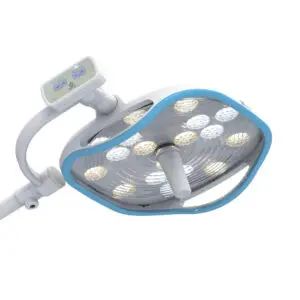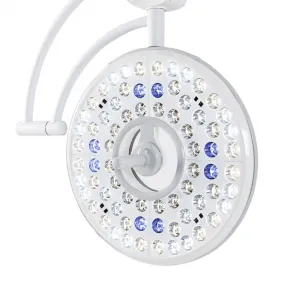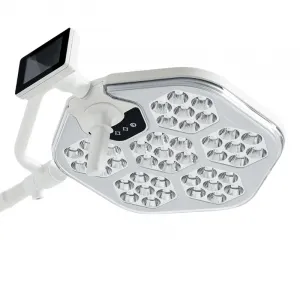In recent years, LED operating room lights have taken center stage in the world of surgical lighting due to their numerous advantages over traditional halogen lights. As medical technology continues to advance, surgical lighting plays a pivotal role in ensuring successful procedures and optimal patient outcomes. Whether it’s for an operating room or a procedure room, choosing the right lighting system involves careful consideration of various factors to enhance visibility, comfort, and safety for both surgical teams and patients. In this article, we will explore the eight most critical features to look for when purchasing operating room and procedure lights.
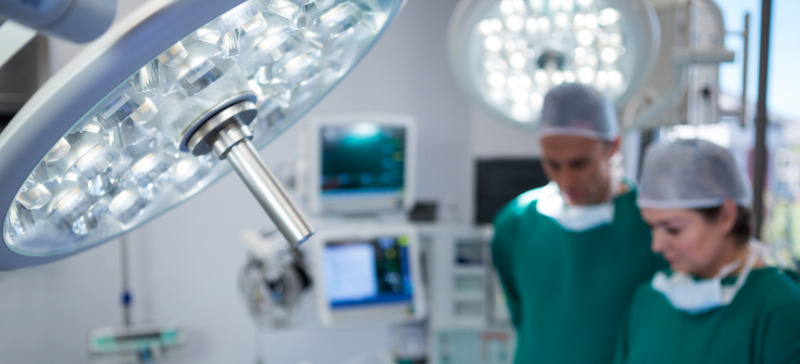
Introduction: The Rise of LED Operating Room Lights
The adoption of LED technology in surgical lighting has revolutionized the way medical professionals illuminate operating rooms and procedure suites. LEDs offer superior performance, energy efficiency, and versatility, making them a preferred choice for modern healthcare facilities. With their precise illumination and reduced heat emissions, LED lights have become synonymous with improved surgical outcomes and enhanced infection control.
Distinguishing Operating Room Lights from Procedure Room Lights
Before delving into the essential features, it’s important to differentiate between operating room lights and procedure room lights. While both serve the purpose of illuminating medical spaces, operating room lights are typically larger and more powerful to accommodate complex surgeries. Procedure room lights, on the other hand, are designed for less invasive procedures and examinations, requiring less intensity.
The 8 Most Important Features to Consider
- Luminance and Illuminance: Luminance, measured in LUX, refers to the amount of light falling on a surface. Surgical lights should provide sufficient luminance for optimal visibility without causing glare or eye strain. The International Electrotechnical Commission (IEC) recommends a range of 40,000 to 160,000 LUX for operating rooms, ensuring clear visualization of the surgical field. In reality most lights on the market targeted for this use will have the recommended LUX. Brighter is not always better. Power level adjustment, shadow diffusion, and color rendering make a big difference. More information on Lux and Color Temperature
- Color Temperature and Color Rendering: LED lights should replicate natural daylight as closely as possible. The color temperature, measured in Kelvin (K), should ideally fall between 3,000 to 6,700 K. Additionally, a high Color Rendering Index (CRI) of 85 to 100 ensures accurate color representation of body tissue and fluids, aiding surgeons in making precise decisions. A high CRI above 90 should be expected. Usually higher CRI ratings are associated with higher quality lighting. Visit our lighting quality guide for more detailed information on CRI.
- Shadow and Glare Management: Shadows and glare can hinder surgical procedures and compromise patient safety. Look for lights with multiple sources that can be cross-focused to minimize shadows. Consistent illumination across the entire pattern helps reduce glare, preventing eye fatigue and distractions. This is a main feature that surgical lights were originally designed for. Learn more about shadow diffusion and consistent illumination here >>
- Heat Management: Excessive heat emission from surgical lights can lead to discomfort for both surgical teams and patients. LED lights, known for their minimal heat output, provide a more comfortable environment and prevent tissue desiccation during procedures. LED lights are a big leap forward here compared to traditional and halogen options. If you have not switched over this is a nice selling point.
- Adjustability and Ergonomics: Surgical lights should offer flexible adjustments, including color temperature, intensity, and focusability. Comfortable and easily accessible controls, tailored to the surgeon’s preferences, contribute to optimal performance during procedures. It the lights have easy to use features in a real world setting it is a big plus.
- Sterilization and Infection Control: Maintaining a sterile environment is paramount in healthcare settings. Lights should be designed for easy cleaning and disinfection, with antibacterial components and minimal crevices to prevent bacterial buildup.
- Backup Light for Emergencies: A reliable backup light source is essential in case of power outages. LED lights offer gradual decline in intensity, providing advanced warning of potential issues. Backup lights should activate within seconds and maintain a minimum intensity of 40,000 LUX.
- Integration with AV Equipment: In the era of advanced medical technology, seamless integration between surgical lighting and audiovisual equipment enhances collaboration and documentation. Lights with options for mounting high-definition monitors and cameras facilitate efficient communication and visualization. This also means that the mount and arm features of the system should be able to support a reasonable weight and not drift.

Pay For What Matters
Higher-priced systems are not necessarily higher-quality systems. Do your homework, in many cases facilities pay higher prices based on a brand or vendor pricing strategy. Know what is important for your facility and what your goals are.
You may consider paying a premium for:
- Quality of manufacture
- Companies that are proven and have been operating for decades
- Companies that specialize in lighting
- The amount of support, training, and service you expect to need
- A longer manufacturer’s warranty
- The value added from the physical presence of the product
- Modern and attractive form factor
- Special features that relate directly to your facilities procedures and workflow
Preparing for Vendor Discussions: Key Considerations for Surgical Light Selection
When embarking on the journey to select the ideal surgical lighting system for your healthcare facility, thorough preparation is essential to ensure that your chosen solution aligns seamlessly with your unique needs and space constraints. Engaging with vendors armed with comprehensive information empowers you to make informed decisions that will enhance patient care, optimize surgical outcomes, and facilitate efficient operations. Here are the crucial elements to have ready when discussing your surgical light options with vendors:
- Facility Specifications:
- Room Dimensions: Provide accurate measurements of your operating rooms and procedure spaces. Clear understanding of room size ensures that the selected lighting system is appropriately sized and positioned to illuminate the surgical field effectively.
- Ceiling Height: Note the ceiling height in your rooms. This information is vital for determining the optimal length of suspension arms and ensuring adequate clearance for the lighting system.
- Ceiling Superstructure: Understand the structural elements of your ceiling, including support beams and grid layouts. This knowledge aids in identifying suitable attachment points for surgical light suspension arms and other equipment.
- Specialized Procedures and Equipment:
- Procedure Types: Different surgical procedures may require specific lighting configurations. Inform your vendor about the range of procedures performed in your facility, from routine surgeries to specialized interventions. This information helps tailor the lighting system to meet the diverse needs of your surgical teams.
- Mounting Considerations: If you plan to integrate additional equipment, such as high-definition monitors or cameras, communicate these intentions to your vendor. Discuss the feasibility of mounting such equipment on the surgical light superstructure or arm system.
- Lighting Preferences:
- Color Temperature and Intensity: Share your preferences for color temperature and light intensity based on the nature of procedures and surgeon preferences. Some surgeries may benefit from warmer tones, while others may require cooler tones for accurate tissue visualization.
- Adjustability: Specify the desired level of adjustability for the lighting system, including the ability to modify color temperature, intensity, and focus. Customizable lighting settings ensure optimal conditions for different surgical scenarios.
- Infection Control and Maintenance:
- Cleaning and Sterilization: Emphasize the importance of infection control and inquire about the ease of cleaning and sterilization for the chosen lighting system. Highlight any specific protocols your facility follows for maintaining a sterile environment.
- Maintenance Accessibility: Discuss the ease of accessing and maintaining different components of the lighting system. Inquire about the availability of service contracts and the expected lifespan of various parts.
- Budget and Financial Considerations:
- Total Cost of Ownership: Share your budget constraints and explore the total cost of ownership for the lighting system. Consider factors such as installation costs, maintenance expenses, and energy efficiency to make a well-informed financial decision.
- Future Expansion and Flexibility:
- Room Utilization: If you anticipate changes in room layout or utilization, communicate these potential shifts to your vendor. Opt for a lighting system that offers flexibility and adaptability to accommodate evolving needs.
- Expansion Plans: If your facility is planning expansion or renovation projects, provide insights into these future endeavors. Your vendor can recommend lighting solutions that align with your long-term growth strategy.
By gathering and sharing these essential details with your vendor, you lay the foundation for productive discussions that result in a surgical lighting solution tailored to your facility’s unique requirements. Open communication and a collaborative approach between your team and the vendor will ultimately lead to the successful implementation of a state-of-the-art surgical lighting system that enhances patient care and elevates the capabilities of your surgical teams.
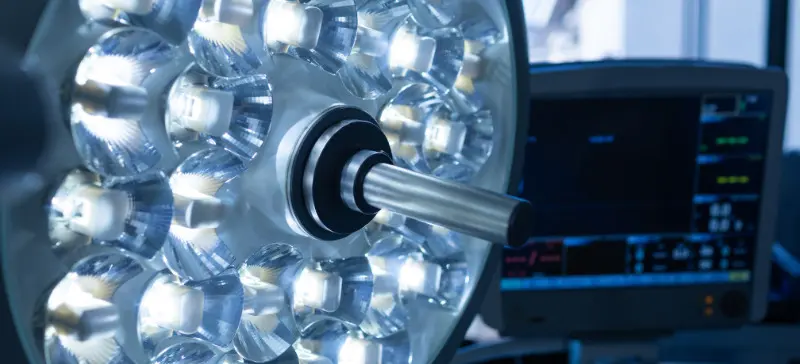
Final Thoughts
Selecting the right operating room and procedure lights is a crucial decision that can significantly impact surgical outcomes, patient safety, and overall efficiency. LED technology has ushered in a new era of surgical lighting, offering enhanced visibility, reduced heat emissions, and improved infection control. By prioritizing features such as luminance, color temperature, adjustability, and sterilization capabilities, healthcare facilities can ensure a state-of-the-art lighting environment that supports the highest standards of medical care. As medical technology continues to evolve, investing in advanced LED operating room and procedure lights remains a pivotal step toward achieving excellence in surgical practice.

